With 30,000+ Islands, Scandinavia Is a Secret Seafood Paradise for Summer Travel
Island hop like the Nordics with these waterfront restaurants and smokehouses serving the region's fresh cuisine.
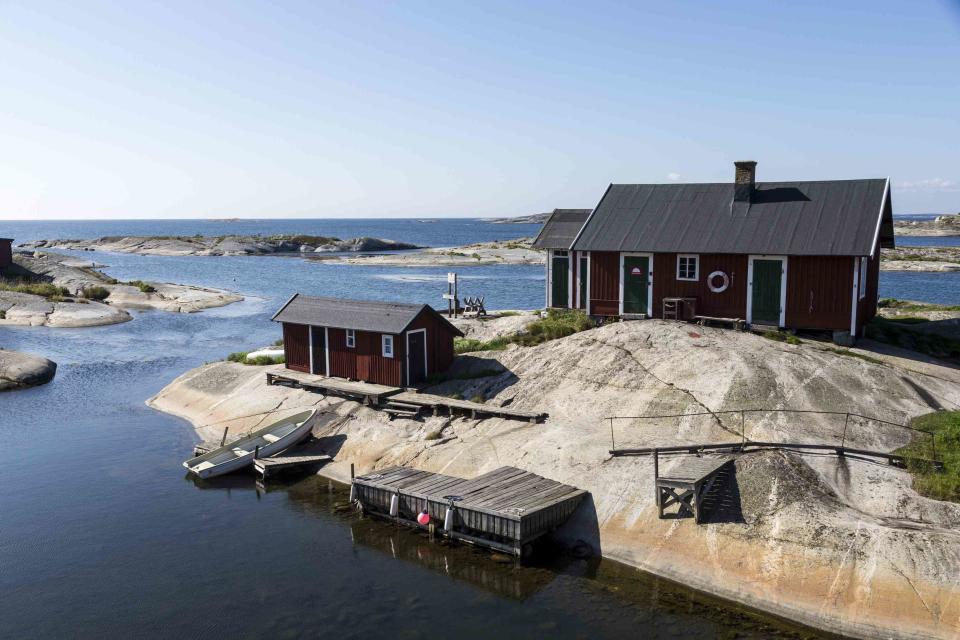
Henrik Trygg/imagebank.sweden.se
When you think of island hopping, the Nordics don’t usually come to mind. But ask any Dane or Swede what makes the most idyllic Scandinavian summer and there’s no doubt they’ll paint you a picture of their favorite Nordic island complete with a small red cabin by the beach, late afternoon swims, and lazy alfresco dinners late into the summer’s midnight sun. From Sweden’s Stockholm archipelago — a scattering of 30,000 islands — to Denmark’s Bornholm in the far south, it’s the abundance of such unique nature that makes visiting these islands the trip of a lifetime.
Each region is unique in its beauty, and visitors can expect forests heaving under blankets of fern and moss, undergrowth thick with wild blueberries and chanterelle mushrooms, and spanning blonde fields of wheat or beach grass studded with poppies undulating in the breeze. Near the shores, intoxicatingly fragrant rosa rugosa beach roses sprout up between the jutting rocks into the sea alongside meadowsweet, juniper, and blackberries. In short, these islands are a forager’s utter summer paradise.
The cuisine of the region is just as compelling. Traditional Scandinavian smokehouses are scattered across the islands, known as rogeriet or rökeri, smoking everything from herring, mackerel, and eel, to salmon, prawns, and oysters over alder wood alongside traditional accompaniments of rye bread, egg yolk, chopped onion, radishes, and butter. Taken in alongside a pint from the local brewery, it’s the casual Scandinavian answer to the ultimate fish and chips shop.
Beyond the smokehouses, restaurants lean into the abundance of the land and sea with smørrebrød (rye bread topped with things like egg, roasted pork, or smoked salmon) on the more traditional side of things and simple seafood grilled over fire alongside locally grown or foraged ingredients.
Bornholm

Courtesy of Kadeau / Photo by Marie Louise Munkegaard
Of all the islands, Denmark’s Borholm best exemplifies both elements of this Nordic island cuisine and atmosphere. Despite being one of the largest islands in the region, small towns are few and far between. Instead, its wild nature reigns supreme. Beaches here range from white sand to rocky to grandiose, and every local has a favorite secret swimming spot (and chanterelle or porcini foraging spot) of their own. In my experience, if you ask nicely, they just might share it with you.
Here the island’s best expression of itself is found over dinner at Kadeau. Legend has it, this Michelin-starred restaurant was started by three locals who, taking over a restaurant, pulled straws to decide who would cook and who would run the front of house; none of them having any real experience in any of it. Whether pure fate or random chance, I couldn’t be happier with the results.
Related: These Asian Restaurants Are Redefining Nordic Cuisine in Copenhagen
With chef Nicolai Nørregaard at the helm, a meal at Kadeau is worth the whole trip to Borholm. Ingredients foraged entirely from the island and the restaurant’s farm will prove an experience of firsts for many diners. Young pine shoots that taste of citrus, giant pickled nautilus pine cones, beach rose petals, and tart currants, all indigenous to the land, are scattered alongside courses of elderflower and crab, scallop, and caviar, and of course, their signature moreish homage to the smokehouses; a deeply rich base note of smoked salmon ladled with lavender butter and shallots. If that’s not enough, with an incredibly rare knife’s edge balance of refined and casual, Kadeau may be the only Michelin-starred restaurant in the world that invites you to take a walk along the beach with your wine as they set your table for dessert. Fancy a swim in between dinner and dessert? That’s (quite sincerely) just as well. It’s no wonder, then, that Kadeau is not only the most impressive offering on the island, but also one of the best in all of Denmark.
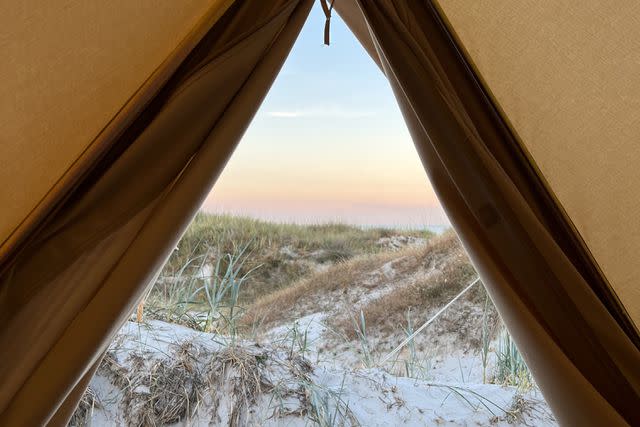
Courtesy of Kadeau
On the more casual end of the spectrum, a rotating family-style menu of fresh takes on smokehouse classics like perfectly grilled mackerel and fennel salad or local herring can be found at Eco Beach Camp. It’s hipster glamping cool here, set along a secluded beach, and with events hosted with the team from Kadeau and their friends, it’s the place to attend some of summer’s coolest culinary mashups.
Recent events included raucous beach dinner parties with the likes of the team from London’s Lyle’s and France’s Le Doyenné. Bringing out partner and chef Kyumin Hahn of two Michelin-starred Kadeau Copenhagen (Bornholm’s equally sensational sister restaurant of the same name) to collaborate with the chefs on a rolling basis throughout the summer, it’s a place where laid back luxury takes on a significantly new meaning. If you’re looking for somewhere to stay, the beach camp tents provide for the ultimate morning: waking up just feet from the beach, nestled privately between the white sand dunes. Ever been camping at a place where you can also buy some of the world’s best naturally made Champagne without breaking the bank? Yeah, me neither.
While each local will have their favorite Bornholm smokehouse, mine is undeniably Svaneke Røgeri. Here, the fourth generation of smokers tends the flame, with the fifth close behind. While there’s the typical selection of eel, mackerel, and prawn, I opt for the classic “sunray” with herring. Adjourn to the far back wall for a pictorial tutorial of how to assemble your smoked fish delicacy and begin. After lunch, there’s little better than a stroll down to the rocks, where you’ll often find sailboats roaming in the distance.
Other worthwhile stops include Bay Frost, a quaint outdoor cocktail bar in Listed Harbour run by a father and son where cocktails are prepared with equal parts of both their measure; the enthusiasm of youth and the wisdom of age, making for some of the best tipples I’ve had in ages. For wine, I'm a huge fan of Provianten Gudhjem, a natural wine bar where you can play chess and eat perfectly cooked prawns, cracking them out of their shells as you take in the boats.
Gotland
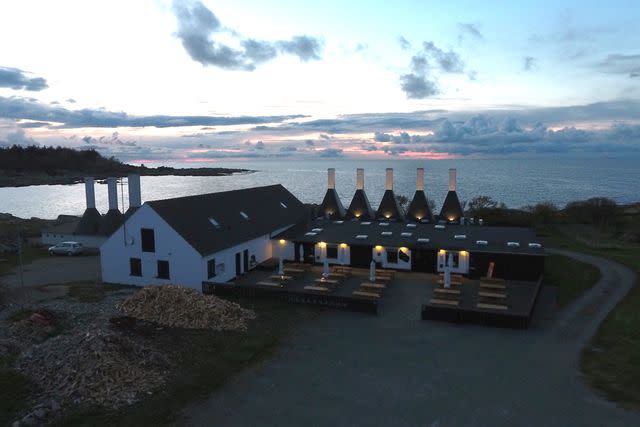
Courtesy of Svaneke Røgeri
Further north, you’ll find the Swedish island of Gotland. Home to Visby, a medieval city where hauntingly beautiful ruins scatter the islands. A UNESCO World Heritage Site, Visby held particular significance to Sweden’s era of vikings. Today it’s most known for its pristine beaches, seafood scene, and budding craft breweries, alongside unique sea stacks: tall column-like rock formations rising up like monoliths from the ground. The most impressive of which are found northeast of Gotland in Fårö.
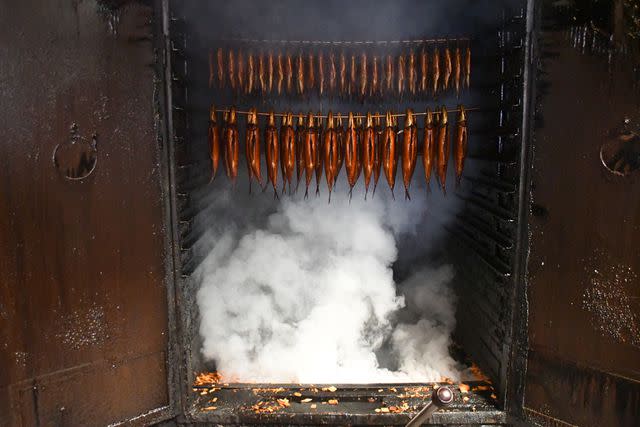
Courtesy of Svaneke Røgeri
Fish being smoked at Svaneke Røgeri in Gotland, SwedenFeaturing a native type of truffle mushroom and a local style of beer called Gotlandsdricka, an ale infused with beach juniper found rampant on the island, Gotland is unique in its dining offerings. Their answer to the smokehouse is best found at Katthammarsviks Rökeri, a family-run seafood spot since 1943 that not only serves an impressive array of salmon but also caviar and freshly caught prawns and fish with a view of the sea. Pro tip: Do not sleep on the fish soup. While a less obvious choice at a smoke shack, it’s a signature dish for a very good reason. On the higher end of the spectrum Lilla Bjer’s farm-focused restaurant fuses the best of that season’s carefully tended bounty with fresh local seafood and meats. You can expect to taste the unique flavors of the island, with truffles, saffron, and salmon, at the forefront.
Stockholm Archipelago
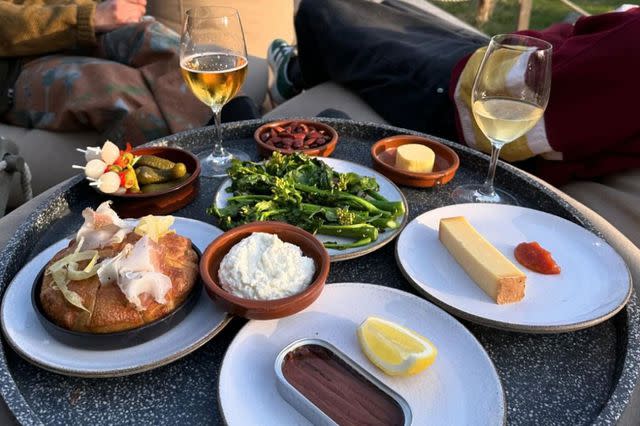
Courtesy of Svartsö Krog
As you head further north to the Stockholm Archipelago, it’s hard to imagine you’re approaching a city as big as Stockholm with how remote some of this collection of tens of thousands of islands can be. Foraging for berries and mushrooms (in season) is common ground here, as are family-run restaurants on islands with less than 100 residents. For example, Svartsö Krog is a seafood restaurant on the small island of Svartsö, where you can either drive or dock by boat. With a beach perfect for afternoon sunbathing either before or after a plate of grilled lobster with peas, pine, and butter, or crispy skinned mackerel over tart wedges of heirloom tomatoes, it’s easy to put away a bottle or two of rosé in the sun before you know it.
On another small island, Ålö, family-run Båtshaket is exactly the classic fish smokehouse you hope to find along the water’s edge. Grab a spot at the outdoor picnic tables or hang your legs over the dock while enjoying a small sampling of all their wears — lightly cooked shrimp, hot and cold smoked salmon, and simple boiled potatoes with a selection of aiolis. One of my favorite ways to burn off some of the post-fishhouse feasting is to make like a Scandinavian and embrace the bike ride. With mostly flat surroundings on this island, it’s the perfect place to take in the scenery following your lunch.
For more Food & Wine news, make sure to sign up for our newsletter!
Read the original article on Food & Wine.


